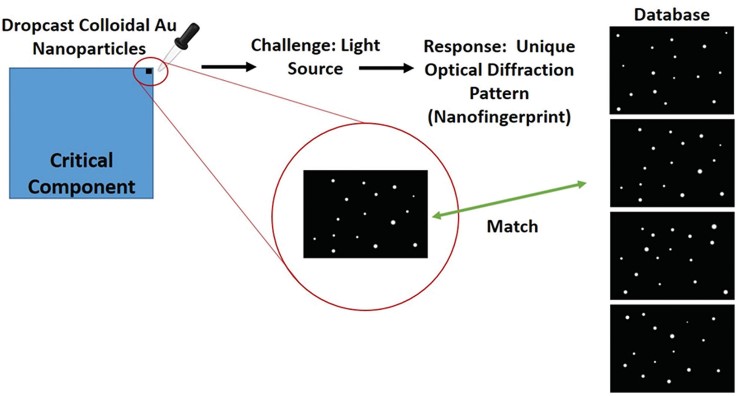Nanoparticles for Anti-Counterfeit Applications
 Globally, trade of counterfeit goods is the second largest source of organized crime income and is surpassed only by the illicit drug trade. Counterfeit goods are pervasive across an array of markets, including apparel, currency, fuels, automotive components, pharmaceuticals, and microelectronics. Great demand for anti-counterfeit and anti-tamper labels, which can be addressed with designer metal nanostructures.
Globally, trade of counterfeit goods is the second largest source of organized crime income and is surpassed only by the illicit drug trade. Counterfeit goods are pervasive across an array of markets, including apparel, currency, fuels, automotive components, pharmaceuticals, and microelectronics. Great demand for anti-counterfeit and anti-tamper labels, which can be addressed with designer metal nanostructures.
The Skrabalak group is addressing anti-counterfeit needs by creating physically unclonable functions (PUFs) with high encoding capability, which are intrinsically random features that produce a response when challenged that is virtually impossible to duplicate (e.g., a fingerprint). This objective is being achieved by using the far-field scattering of randomly deposited metal nanoparticles, and multiple levels of security are be incorporated into the optical taggant through the use of designer nanoparticles.
This research was initially supported through Indiana University and a collaboration with NSWC CRANE. Subsequent funding came from the Indiana Innovation Institute and Research Corporation for Science Advancement through their FRED Award Program.
For a representative publication, please see:

Metal Nanomaterials for Optical Anti-counterfeit Labels
ARTICLE LINK Smith, A. F.; Skrabalak, S. E.* "Metal Nanomaterials for Optical Anti-counterfeit Labels" Journal of Materials Chemistry C, 2017, 5, 3207-3215. DOI: 10.1039/C7TC00080D.


